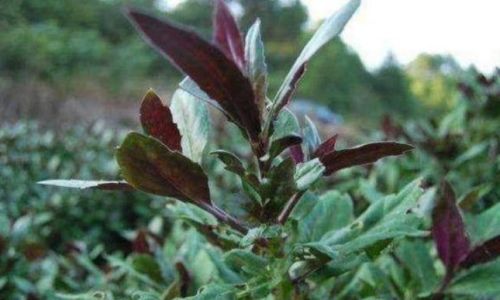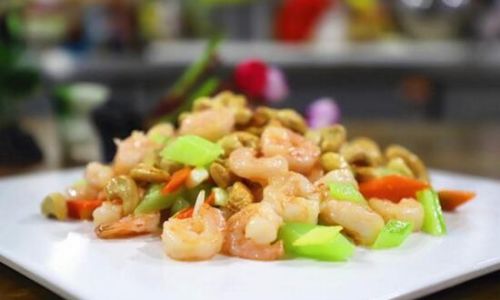In the vast tapestry of culinary exploration, few ingredients captivate the senses and intrigue the palate like the enigmatic purple-backed vegetable, scientifically known as Gynura bicolor. This unique and often underappreciated plant holds a rich history intertwined with traditional medicine, culinary art, and botanical curiosity. As we delve into the world of Gynura bicolor, we uncover its fascinating characteristics, nutritional benefits, culinary uses, and the cultural significance it holds across diverse regions. Prepare to embark on a journey that transcends the ordinary, revealing the extraordinary qualities of this remarkable vegetable.
The Botanical Origins of Gynura bicolor
Gynura bicolor belongs to the Asteraceae family, a sprawling group of plants that includes daisies, sunflowers, and, surprisingly, many edible herbs and vegetables. Native to tropical and subtropical regions of Asia, particularly Southeast Asia, this plant has adapted to a variety of ecological niches, thriving in warm, humid climates. Its name, Gynura, is derived from Greek mythology, where ‘gyn’ refers to a woman and ‘oura’ translates to tail, possibly hinting at the delicate, flowing nature of its leaves. The species name ‘bicolor’ simply means two-colored, an apt description for its distinctive purple-hued undersides and green topsides.

The plant grows as a perennial herb or shrub, reaching heights of up to three feet. Its stems are typically erect, branching out to support a lush canopy of leaves. The leaves themselves are oval to lanceolate, with a smooth texture and a striking color contrast that sets them apart from other greens. When touched, the leaves may emit a faint aroma, adding another layer of intrigue to this already fascinating plant.
Nutritional Profile: A Treasure Trove of Health Benefits
What truly sets Gynura bicolor apart is its impressive nutritional profile. Rich in vitamins and minerals, this vegetable is a powerhouse of health benefits. It boasts high levels of Vitamins A, C, and K, essential for maintaining good vision, boosting the immune system, and promoting healthy blood coagulation, respectively. Furthermore, Gynura bicolor is a significant source of antioxidants, particularly flavonoids and phenolic compounds, which help combat oxidative stress and reduce the risk of chronic diseases.
One of the most remarkable aspects of this vegetable lies in its potential health-promoting properties. Preliminary studies suggest that Gynura bicolor may exhibit hypoglycemic effects, aiding in the management of blood sugar levels. Its anti-inflammatory properties make it a valuable addition to diets aimed at reducing inflammation-related conditions, such as arthritis and cardiovascular diseases. Additionally, the plant contains compounds that could potentially lower cholesterol levels and support liver health.
Culinary Applications: From Traditional to Modern Dishes
Despite its nutritional prowess, Gynura bicolor remains relatively unknown in Western cuisine. However, in its native lands, this vegetable is a cherished ingredient in traditional dishes, often prepared in ways that highlight its unique flavor and texture. In Vietnam, for instance, purple-backed vegetable is stir-fried with garlic and fish sauce, creating a dish that balances savory, tangy, and slightly bitter notes. In Thailand, it’s sometimes used in soups and salads, where its vibrant color and delicate taste enhance the overall presentation and flavor profile.
In the kitchen, Gynura bicolor can be treated similarly to spinach or kale, with a few adjustments to account for its slightly bitter taste and tender texture. When cooking, it’s important not to overcook the leaves, as this can lead to a loss of color and nutrients. Light sautéing, steaming, or blending into smoothies are excellent methods to preserve its delicate qualities. For those adventurous enough, incorporating Gynura bicolor into pestos, stir-fries, or even raw salads can introduce a novel twist to familiar recipes.
Medicinal Uses: Healing Properties Across Cultures
Beyond its culinary applications, Gynura bicolor has been revered for its medicinal properties across various cultures. In traditional Chinese medicine, it’s believed to possess cooling and detoxifying properties, making it useful in treating conditions like heatstroke, sore throats, and skin inflammations. The leaves are often brewed into teas or used topically in herbal remedies. Similarly, in Indonesian folk medicine, Gynura bicolor is employed to treat diabetes, hypertension, and liver disorders, reflecting its broad spectrum of potential health benefits.
Scientific research is gradually catching up with these ancient wisdoms. Studies have begun to investigate the plant’s active compounds, particularly its polysaccharides and polyphenols, which are thought to contribute to its medicinal properties. While much remains to be discovered, the preliminary findings suggest that Gynura bicolor could indeed hold promise as a natural remedy for a range of modern health concerns.

Sustainability and Cultivation: Preserving This Exotic Green
As interest in Gynura bicolor grows, so does the need for sustainable cultivation practices. The plant is relatively easy to grow, thriving in well-drained, fertile soil with consistent moisture and partial sunlight. Its ability to tolerate a range of soil types and moderate shade makes it a versatile addition to home gardens and small-scale farms. However, to ensure the long-term sustainability of this species, it’s crucial to adopt organic farming methods that minimize the use of chemical fertilizers and pesticides.
Moreover, efforts should be made to preserve natural habitats where Gynura bicolor grows wild, protecting these ecosystems from deforestation and habitat destruction. By supporting local farmers and cultivators who prioritize sustainable practices, consumers can play a part in conserving this unique and valuable plant.
Cultural Significance: Beyond the Plate
Gynura bicolor’s significance extends beyond its nutritional and medicinal values. In many cultures, it’s intertwined with folklore, rituals, and symbolic meanings. In some communities, the plant is associated with longevity and vitality, reflecting its perceived ability to promote health and well-being. Its striking purple hue is often seen as a symbol of royalty and prosperity, making it a favored ingredient in festive dishes and celebrations.
As we continue to explore the diverse realms of food and medicine, Gynura bicolor serves as a reminder of the untapped potential within our natural world. By embracing this exotic green, we not only enrich our diets but also honor the traditions and wisdom of those who have cherished it for generations.
Conclusion: A Journey Through the Purple-Backed Wonders
In conclusion, Gynura bicolor, or purple-backed vegetable, is a remarkable plant that defies conventional categorization. Its unique nutritional profile, culinary versatility, medicinal properties, and cultural significance make it a treasure trove of benefits waiting to be discovered. As we learn more about this fascinating vegetable, we are reminded of the importance of exploring and preserving the diverse array of plants that nature has gifted us. By integrating Gynura bicolor into our lives, we embark on a journey that not only nourishes our bodies but also connects us to the rich tapestry of human history and the natural world. So, the next time you’re at the market or in your garden, keep an eye out for this extraordinary green—it might just be the next great addition to your culinary adventures.






0 comments